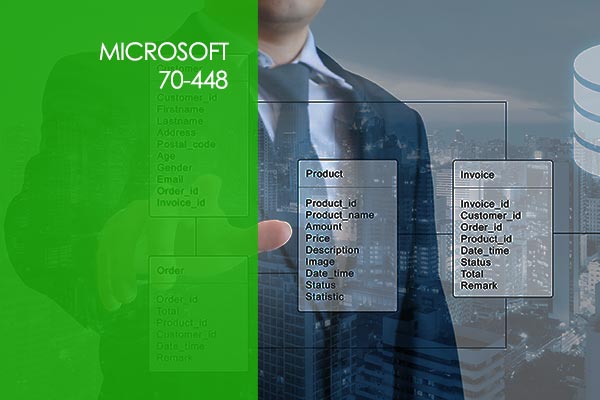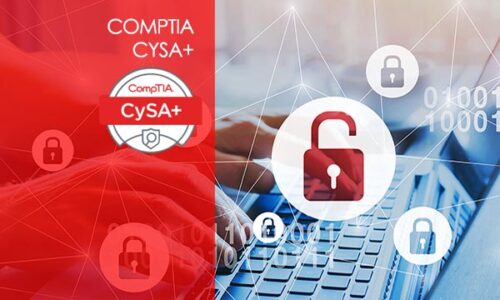CompTIA Cybersecurity Analyst (CySA+)
Module 1: Threat Management
Introduction
Given a scenario, apply environmental reconnaissance techniques using appropriate tools and processes Part
1
Given a scenario, apply environmental reconnaissance techniques using appropriate tools and processes Part
2
Given a scenario, apply environmental reconnaissance techniques using appropriate tools and processes Part
3
Given a scenario, apply environmental reconnaissance techniques using appropriate tools and processes Part
4
Given a scenario, apply environmental reconnaissance techniques using appropriate tools and processes Part
5
Given a scenario, apply environmental reconnaissance techniques using appropriate tools and processes Part
6
Given a scenario, apply environmental reconnaissance techniques using appropriate tools and processes Part
7
Given a scenario, apply environmental reconnaissance techniques using appropriate tools and processes Part
8
Given a scenario, apply environmental reconnaissance techniques using appropriate tools and processes Part
9
Given a scenario, analyze the results of a network reconnaissance Part 1
Given a scenario, analyze the results of a network reconnaissance Part 2
Given a scenario, analyze the results of a network reconnaissance Part 3
Given a scenario, analyze the results of a network reconnaissance Part 4
Given a scenario, analyze the results of a network reconnaissance Part 5
Given a network-based threat, implement or recommend the appropriate response and countermeasure Part 1
Given a network-based threat, implement or recommend the appropriate response and countermeasure Part 2
Given a network-based threat, implement or recommend the appropriate response and countermeasure Part 3
Given a network-based threat, implement or recommend the appropriate response and countermeasure Part 4
Explain the purpose of practices used to secure a corporate environment Part 1
Explain the purpose of practices used to secure a corporate environment Part 2
Explain the purpose of practices used to secure a corporate environment Part 3
Explain the purpose of practices used to secure a corporate environment Part 4
Module 2: Vulnerability Management
Given a scenario, implement an information security vulnerability management process Part 1
Given a scenario, implement an information security vulnerability management process Part 2
Given a scenario, implement an information security vulnerability management process Part 3
Given a scenario, implement an information security vulnerability management process Part 4
Given a scenario, implement an information security vulnerability management process Part 5
Given a scenario, implement an information security vulnerability management process Part 6
Given a scenario, implement an information security vulnerability management process Part 7
Given a scenario, analyze the output resulting from a vulnerability scan Part 1
Given a scenario, analyze the output resulting from a vulnerability scan Part 2
Compare and contrast common vulnerabilities found in the following targets within an organization Part 1
Compare and contrast common vulnerabilities found in the following targets within an organization Part 2
Compare and contrast common vulnerabilities found in the following targets within an organization Part 3
Module 3: Cyber Incident Response
Given a scenario, distinguish threat data or behavior to determine the impact of an incident Part 1
Given a scenario, distinguish threat data or behavior to determine the impact of an incident Part 2
Given a scenario, distinguish threat data or behavior to determine the impact of an incident Part 3
Given a scenario, prepare a toolkit and use appropriate forensic tools during an investigation Part 1
Given a scenario, prepare a toolkit and use appropriate forensic tools during an investigation Part 2
Given a scenario, prepare a toolkit and use appropriate forensic tools during an investigation Part 3
Given a scenario, prepare a toolkit and use appropriate forensic tools during an investigation Part 4
Given a scenario, prepare a toolkit and use appropriate forensic tools during an investigation Part 5
Explain the importance of communications during the incident response process
Given a scenario, analyze common symptoms to select the best course of action to support incident response
Part 1
Given a scenario, analyze common symptoms to select the best course of action to support incident response
Part 2
Given a scenario, analyze common symptoms to select the best course of action to support incident response
Part 3
Given a scenario, analyze common symptoms to select the best course of action to support incident response
Part 4
Summarize the incident recovery and post-incident response process Part 1
Summarize the incident recovery and post-incident response process Part 2
Summarize the incident recovery and post-incident response process Part 3
Summarize the incident recovery and post-incident response process Part 4
Module 4: Security Architecture and Tool Sets
Explain the relationship between frameworks, common policies, controls, and procedures Part 1
Explain the relationship between frameworks, common policies, controls, and procedures Part 2
Explain the relationship between frameworks, common policies, controls, and procedures Part 3
Explain the relationship between frameworks, common policies, controls, and procedures Part 4
Given a scenario, use data to recommend remediation of security issues related to identity and access
management Part 1
Given a scenario, use data to recommend remediation of security issues related to identity and access
management Part 2
Given a scenario, use data to recommend remediation of security issues related to identity and access
management Part 3
Given a scenario, use data to recommend remediation of security issues related to identity and access
management Part 4
Given a scenario, review security architecture and make recommendations to implement compensating
controls Part 1
Given a scenario, review security architecture and make recommendations to implement compensating
controls Part 2
Given a scenario, review security architecture and make recommendations to implement compensating
controls Part 3
Given a scenario, use applications security best practices while participating in the Software Development Life
Cycle (SDLC) Part 1
Given a scenario, use applications security best practices while participating in the Software Development Life
Cycle (SDLC) Part 2
Overview
Conclusion
There are no items in the curriculum yet.








